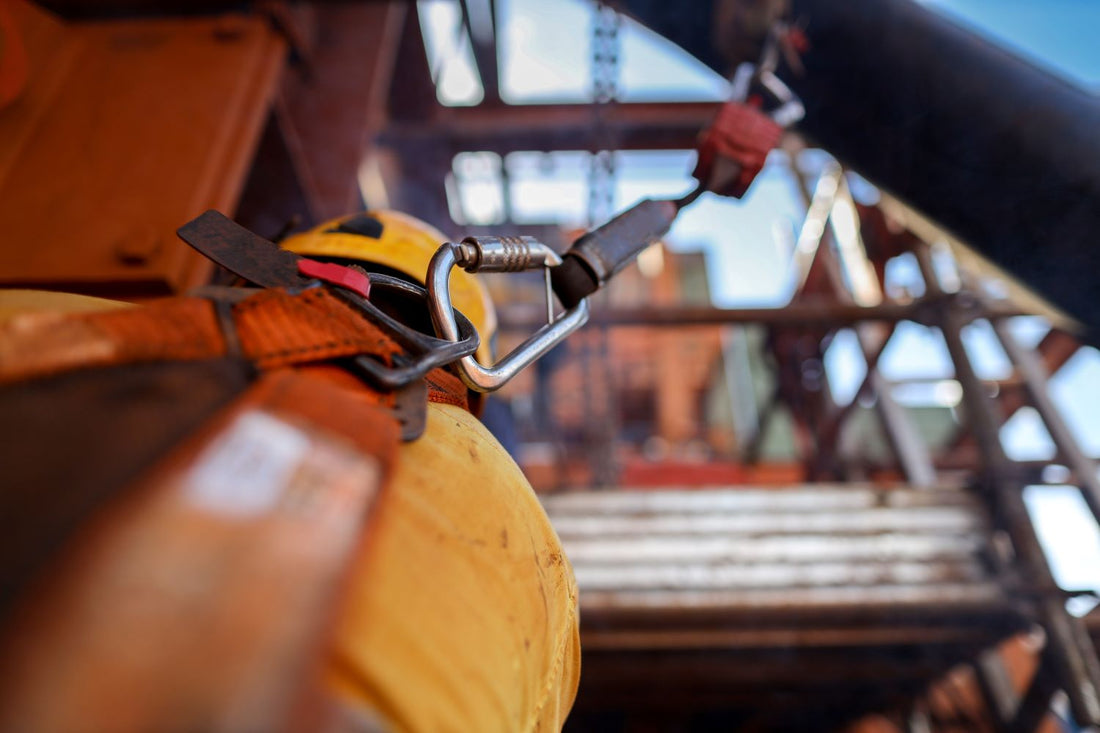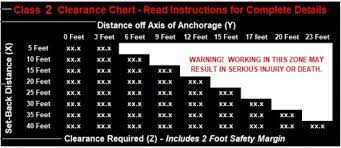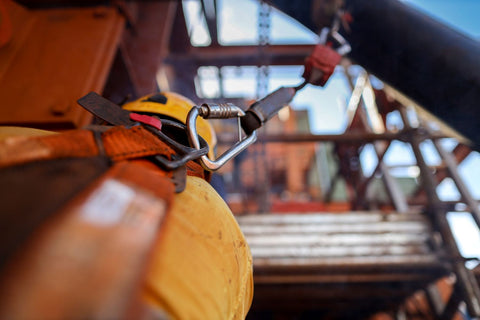
ANSI Z359.14-2021 Standard Update: Everything You Need to Know
On August 1, 2023, the American National Standards Institute's (ANSI) revision of their Z359.14 standard officially took effect, implementing new changes to their safety requirements of self-retracting devices for personal fall arrest and rescue systems. The revised ANSI Z359.14 standard, approved on June 17, 2021, remains a consistent authoritative guide to fall protection and influences regulatory compliance for organizations like OSHA. For manufacturers, this new standard means complying with the classification, labeling, and testing of these new devices.
Self-retracting devices, such as self-retracting lines (SRLs), play a crucial role in many fall arrest systems. These devices provide workers with safety and flexibility designed to limit force exerted on the body during falls and arrest momentum more quickly to save lives. Companies need to stay up to date on regulatory compliance with these devices in order to keep their workers safe in their environments.
This article explains the latest updates to the ANSI Z359 standard and what you need to know in order to remain compliant with your personal fall arrest systems.
ANSI Z359.14: Updates Explained
The ANSI Z359.14-2021 standard brings significant changes to the classification of Self-Retracting Lifelines, offering greater clarity and specificity in choosing the right fall protection equipment. Since the standard's inception in 2007, the ANSI Z359.14 standard has undergone a handful of revisions. The latest revisions from the 2021 standard supersede any requirements set by previous revisions, including the latest Z359.14-2014 that contains information on leading-edge devices.
Here are the most notable changes identified in the Z359.14-2021 ANSI standard:
Class & Category Changes for SRLs
First, ANSI Z359.14-2021 introduces changes to classifications of SRDs/SRLs. Before, SRLs were organized by type (SRL, SRL-R for devices with rescue/retrieval functions, or SRL-LE for leading edge capability) and class (Class A or Class B). Now with the latest revision, ANSI introduced new classifications for types and classes to help manufacturers better determine the specific testing needed to perform on each design they offer.
The new SRL types from the latest revision include:
-
SRL: The standard version of self-retracting lanyards. These come in the form of mechanical fall arresters that feature locking mechanisms and work to limit the falling forces imparted on users.
- SRL-P: This version is compact enough to be worn by the user on a full-body harness to be used as a fall arrest connector and/or mounted to an anchorage.
- SRL-R: This standard, which includes integral rescue capability, contains means for assisted rescue by raising or lowering the rescue subject.
Additionally, ANSI removed the previous Classes A and B and introduced the new class types listed below:
- Class 1: The new standard of Class 1 SRDs consists of "devices which shall be used only on overhead anchorages and shall be subjected to a maximum free fall of 2 feet (610mm) or less, in practical application." Class 1 devices work for anchorages placed at or above the dorsal D-ring location.
- Class 2: This standard describes Class 2 SRDs as "devices [...] intended for applications wherein overhead anchorages may not be available or feasible and which may, in practical application, be subjected to a free fall of no more than 6 feet (1.8m) over an edge." Class 2 devices work for anchorages above, at, or up to 5 feet below the dorsal D-ring. Also, all SRL-LE-type devices are now designated under Class 2 devices.
 Graphic from Ohio PowerTool.
Graphic from Ohio PowerTool.
Labeling for SRLs
With the new classifications listed above, the ANSI Z359.14 revision requires standardized labeling for SRDs to help users identify which device they need for their specific fall hazards. The labels shown above include the clear and conspicuous verbiage dictating where they connect .
Additionally, Class 2 devices require safety labels illustrating a fall clearance chart and diagram of the axes, shown both where the device connects to the harness. For Class 2 SRL-P devices, they must include a label for leading edge clearance requirement. The following labels are shown below:
 Class 2 Clearance Chart from 3M.
Class 2 Clearance Chart from 3M.
 Graphic from PK Safety Supply.
Graphic from PK Safety Supply.

Graphic from PK Safety Supply.
Safety Testing for SRLs
Lastly, testing requirements have changed to improve factors of safety and address predicable vulnerabilities. All types of SRLs must meet specific thresholds of performance in order to be compliant. The following performance criteria for Class 1 and Class 2 self-retracting devices includes:
- A Maximum Arrest Force of 1,800 lbs.
- An Average Arrest Force of 1,350 lbs.
- An Arrest Distance of 42 inches.
- Capable of withstanding a 3,600-lb. static load for one minute; 1,800-lb. static load for SRLs without internal braking systems.
Class 2 devices underwent updates and added new changes to their testing requirements amidst the addition of SRL-LE devices to the class:
- Class 2 devices require an energy absorber on the lifeline. This excludes SRLP devices where the device attaches to the dorsal D-rings instead of anchorages.
- Webbing and synthetic rope must have a minimum tensile breaking strength of 5,000 lbs.
- Class 2 devices, along with SRL-Ps do NOT need to retract after the overhead dynamic performance tests.
- Class 2 devices must pass a dynamic test over an edge with 310 pound weight

Fall Protection from US Cargo Control
Falls continue to be one of the most common culprits of work-related injuries and deaths. Maintaining safe and compliant fall protection systems is crucial. No matter where you work, using high-quality fall protection components keeps you secure while working from heights, leading edges, or other hazardous environments.
Besides self-retracting lines, US Cargo Control offers a variety of components necessary to complete your personal fall arrest systems, including:
- Safety Harnesses
- Lanyards
- Connectors
- Anchorages
- Tool Tethers
- Horizontal Lifelines
- Rescue & Descent Equipment
Always ensure that your include the necessary components for a personal fall arrest system, including a body harness, connector, and anchor. If you aren't sure which components you need, we offer comprehensive fall protection kits for both general and specific applications.
More Articles You May Like:
Temperature Ratings for Chain Slings
Tension vs. Compression Force: What's the Difference?
Understanding Tensile Strength for Lifting & Rigging Equipment







